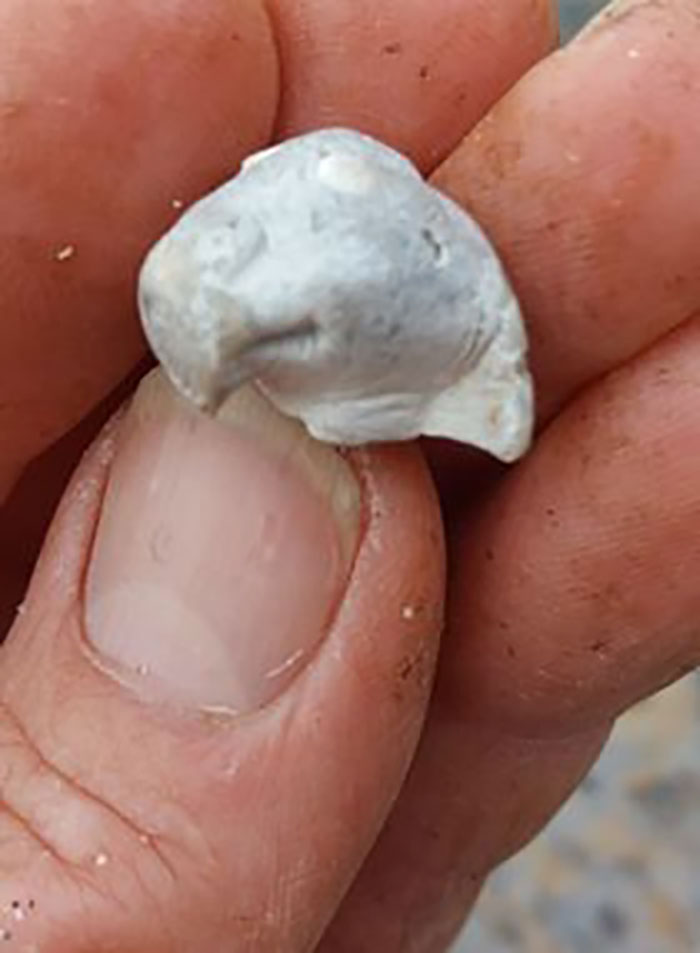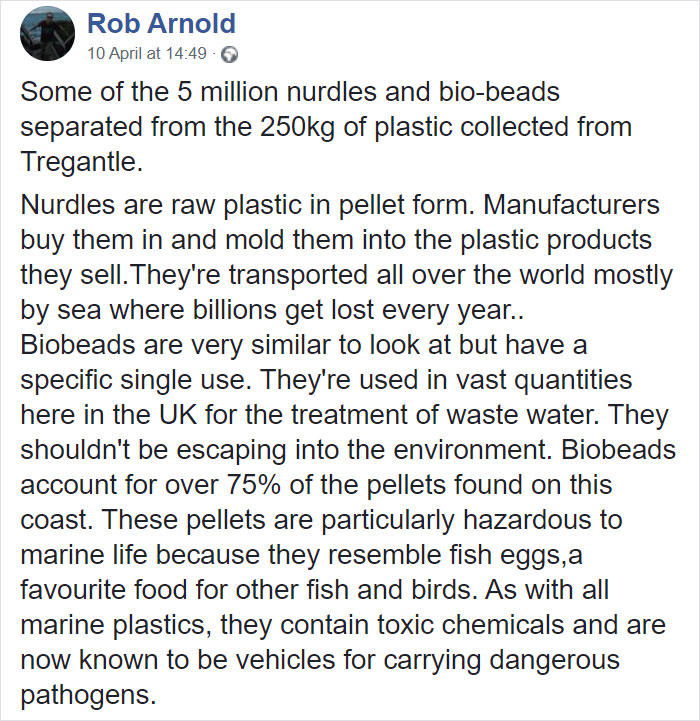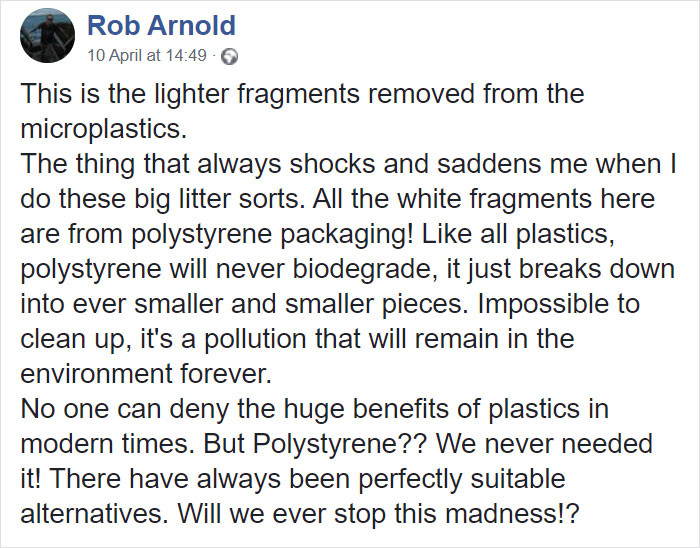
Man Takes Home 551lbs Of Trash From The Beach, Sorts It Out In His Backyard And Shares Interesting Finds
Interview With ArtistWhile you’re all bored, locked up in quarantine, thinking of what to put your hands on next, one guy has it all sorted. I mean, literally. Rob Arnold has sorted out 250 kg of washed plastic litter and put it all out to dry.
“Put the first 3 weeks of lockdown to good use, sorting microplastics at home,” wrote Rob in his Facebook post, which has been shared more than 6K times. But Rob is no rookie when it comes to cleaning beaches. He’s been raising awareness on marine plastic pollution with art objects, sculptures, and compositions all made from the sorted plastic. But littered shores are full of surprises, and some of his findings are incredible!
Bored Panda has written about Rob previously, when he collected 35 bags of microplastics on the Tregantle beach and turned it into art. Check it out right here.
More info: Facebook | Instagram
Rob Arnold collected washed plastic litter from a beach in Cornwall and put it out to dry while in quarantine
Bored Panda contacted Rob for an interview to find out more about his plastic-sorting hobby. It turns out, 7 years ago, Rob saw the film “Message in the Gyre,” which inspired him to use his time in retirement and make a difference. “It graphically shows the plight of the albatrosses in the Pacific ocean, feeding plastic to their young having mistaken it for food, with tragic results.” And it was a turning point for Rob.
“I’ve been doing cleans ever since and use my artworks, created with the litter, to campaign and try to reduce the plastic entering the ocean in the first place,” he says. The method of sorting the plastic came out of Rob’s desire to create a sculpture of an Easter Island statue. “I realized that it would require me collecting large quantities of plastic fragments so I designed a sifting apparatus to help me do it.”
Some of Rob’s plastic findings turned out to be historical pieces
The process of sifting the litter brought very revealing findings. Rob said that “It shows of our attachment to plastic over the years and the problems it was creating in terms of marine litter.” Each year, for the last 4 years, Rob does one big session of sorting plastic. Most importantly, he puts his interesting finds on social media and it has grabbed everyone’s attention.
Among many incredible findings, one came on Valentine’s Day and was added to Rob’s “romantic imagines” story. “It was a rather beautiful, ’80s-styled, wave-worn, ladies’ plastic beach sandal,” Rob recounts, “and on the sole was imprinted ‘Made in Brazil.’” He still has the sandal today, and it sparked an interest in collecting plastic beach items. “I now have dozens of plastic beach shoes, no pairs!”
Rob has been putting his quarantine time to use and sorting the microplastics at home
Rob says that marine plastic pollution is a global problem and it gets worse because plastic never biodegrades. “The plastic circulating in the oceans breaks up into smaller and smaller pieces. This doesn’t reduce the volume, but increases the number of pieces and makes it much harder to remove.” The sand on the beaches is now laced with tiny microplastics almost too small to see.
Most importantly, “these plastic particles are poisonous to small sea creatures, when they ingest it, it goes straight into the food chain, and we’re at the top!” And even if sometimes Rob gets down thinking about how badly it all affects marine life, he keeps inspiring others by doing as much as he can. “Staying busy with beach cleans, sorting litter, making artworks, and campaigning helps me to stay positive.”
Some of the little treasures have been floating around in the sea for more than half a century!
Marine plastic pollution is among the greatest wildlife disasters of current times. According to a study run by the World Economic Forum, 8 million metric tons of plastic enter the ocean every year. ABC Newshas calculated that this number equates to a garbage truck full of plastic being dumped into the ocean every single minute. Plastic has now accumulated in huge quantities and reached the deep-sea areas that were previously untouched by humans.
The main problem with plastic is that it’s almost indestructible, only getting smaller with time but never fully disappearing. According to Lucy Woodall, a principal scientist at Nekton, microplastics are probably in every food we eat: “they’re in my cup of tea. I am breathing them in.” Marine animals ingest plastic particles, get entangled in them and hurt themselves.
This is what people had to say about Rob’s hobby
213Kviews
Share on FacebookWhat an achievement, well done. I understand that this is just a very small amount of microplastics in the grand scheme of things but it is better than not doing anything at all. The patience needed to sort through it all would be immense so kudos to you and anyone else who is/has been doing this. Thank you.
What an achievement, well done. I understand that this is just a very small amount of microplastics in the grand scheme of things but it is better than not doing anything at all. The patience needed to sort through it all would be immense so kudos to you and anyone else who is/has been doing this. Thank you.

 Dark Mode
Dark Mode 

 No fees, cancel anytime
No fees, cancel anytime 




























































































311
30